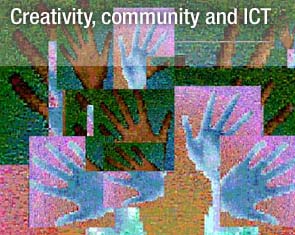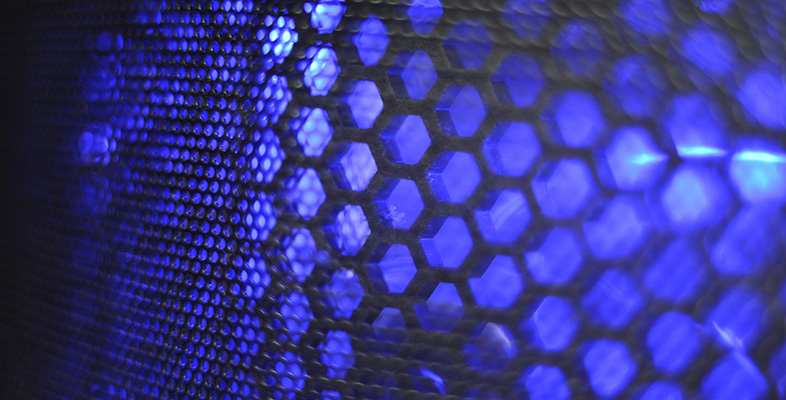4.2 Case Study 2: A digital arts collaboration
The Virtual Identities Digital Arts Project (Learning Schools Programme, 1999a) involved post-16 art and design students from two Liverpool schools and two Kent schools in the United Kingdom. The project unlocked new ideas and ways of working by encouraging collaboration between students from different geographical areas, cultures, experiences and perceptions. Each student was assigned a partner. To begin with they exchanged a ‘digital postcard’ that represented one aspect of their personal identity. Every email image received had to be responded to, modified and interpreted, while retaining 20 per cent of the original in order to provide a sense of sequence.
The stimulus for these images and artistic statements was open ended, chosen by the students themselves. In addition to using images and texts that represented their individual identities, students were encouraged to think about their own values and concerns. They collected newspaper cuttings reflecting local, national or global issues, such as ecology or peace studies. One student scanned images of her hand, which she then digitally manipulated and modified. Here are her teacher's comments:
This was intended to reflect her identity in a subtle way. As with fingerprints, the truth was there, but only if the code could be interpreted. There was a deliberate attempt to be obtuse and enigmatic, to see what it would draw from her collaborator. Her image was then altered and posted to the web site. It now contained military elements and reference to the Gulf War, which was threatening to escalate at the time. The hands, which originally appeared to be welcoming, now looked as if they were surrendering or imploring. By restricting the colour of the whole image to tones of red, the fingers resembled flames within a sea of fire. She decided to make the conflict with Iraq more explicit in the work. She used the modified image as a background, overlaying images of war and incorporating the flags of the UN and Iraq.
The students became highly focused fellow ‘artists’, passionate about the project in hand. One of the project teachers said:
I was keen to exploit the vast potential of the internet for art and design. In this sense, the collaboration was intentionally creative, indeed this remained the first and key ‘possibility’ of the project, i.e. the possibility of moving in exciting and unpredictable directions.
The use of the internet enabled students to transform physical objects into digital images. It also provided a medium in which they could explore visual phenomena, experimenting with visual language and extending the range of tools currently used in art, including image manipulation and layering. As with the roach documentary, the resulting images and web site became a visual record of the development of students' ideas, a joint ‘oeuvre’ (as Bruner calls it), with a potentially international audience: the sharing of work-in-progress with others.
Again, in common with our young scientific community, the project clearly drew on a range of expertise both within and outside the schools, including the work of a ‘talented and experienced teaching team’ and a visiting artist. Technology enabled teachers and students to interact collaboratively, communicating with different audiences at a local, national and international scale.’ This initiative represented a totally new way of working for both departments and students involved.

The image above was created from a collaborative project called ‘Virtual Identities’, worked on by a group of students from Anfield Community College. Students used library resources, newspaper cuttings and the internet to explore the ideas around virtual identity. They had access to scanners, photocopiers, digital cameras, and software packages such as CorelDraw, PhotoPaint, Adobe Photoshop. The students started by photocopying their hands, then tried scanning them and manipulating the images by cropping, using a layering technique, using colour and finally manipulating the pixel resolutions.
Case study 2 has emphasised the way in which ICT can help:
provide a medium that allows students to move in unpredictable directions;
extend the range of tools currently available within the ‘subject’ discipline;
enable collaborative ‘products’.
Linked below are two other examples to explore, plus an OpenLearn unit on the role of digital media as a teaching tool:
Microsoft Miro Portraits
Animation: ‘Out of your head’
E500_12 Teaching using digital video in secondary schools
